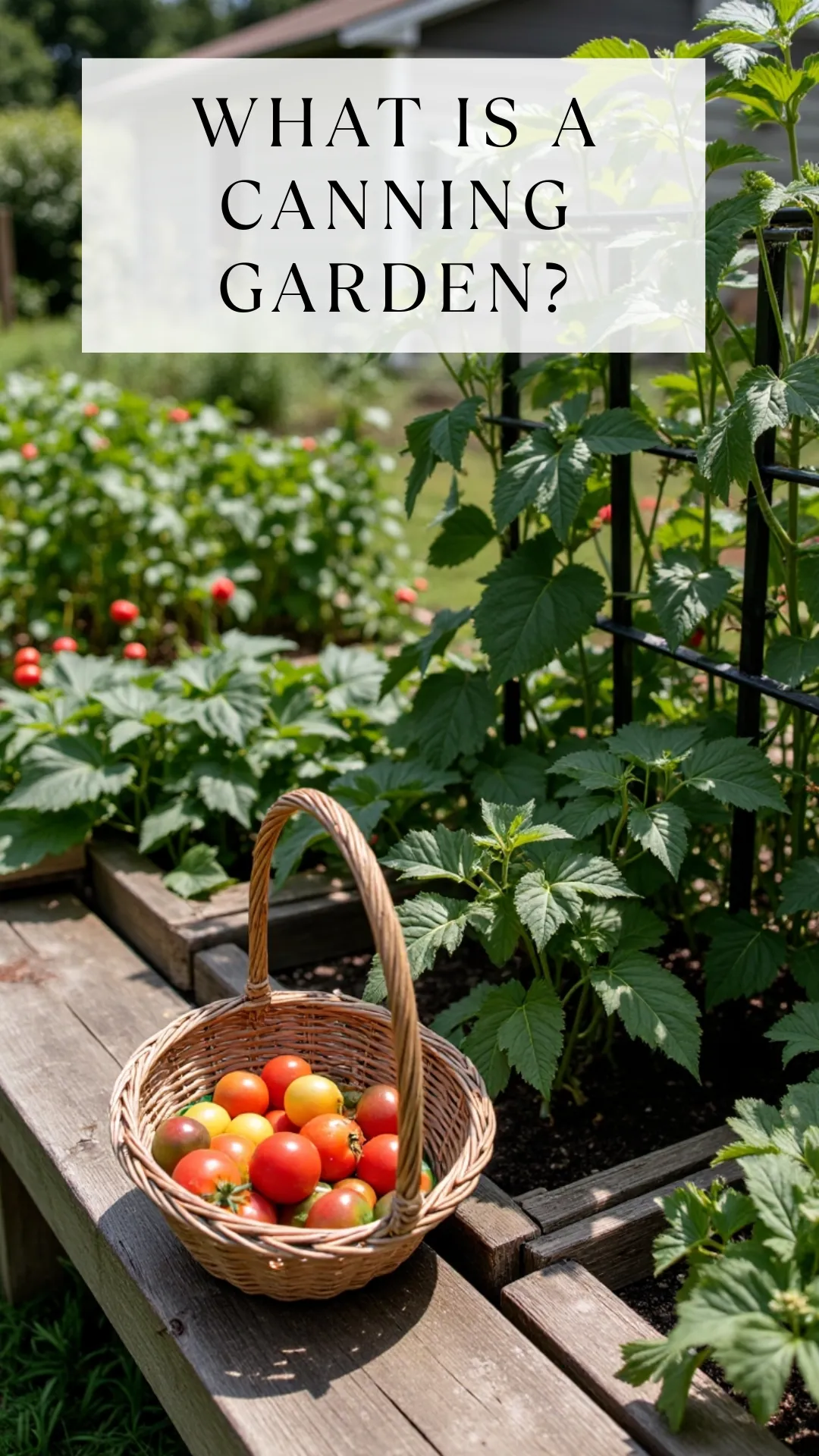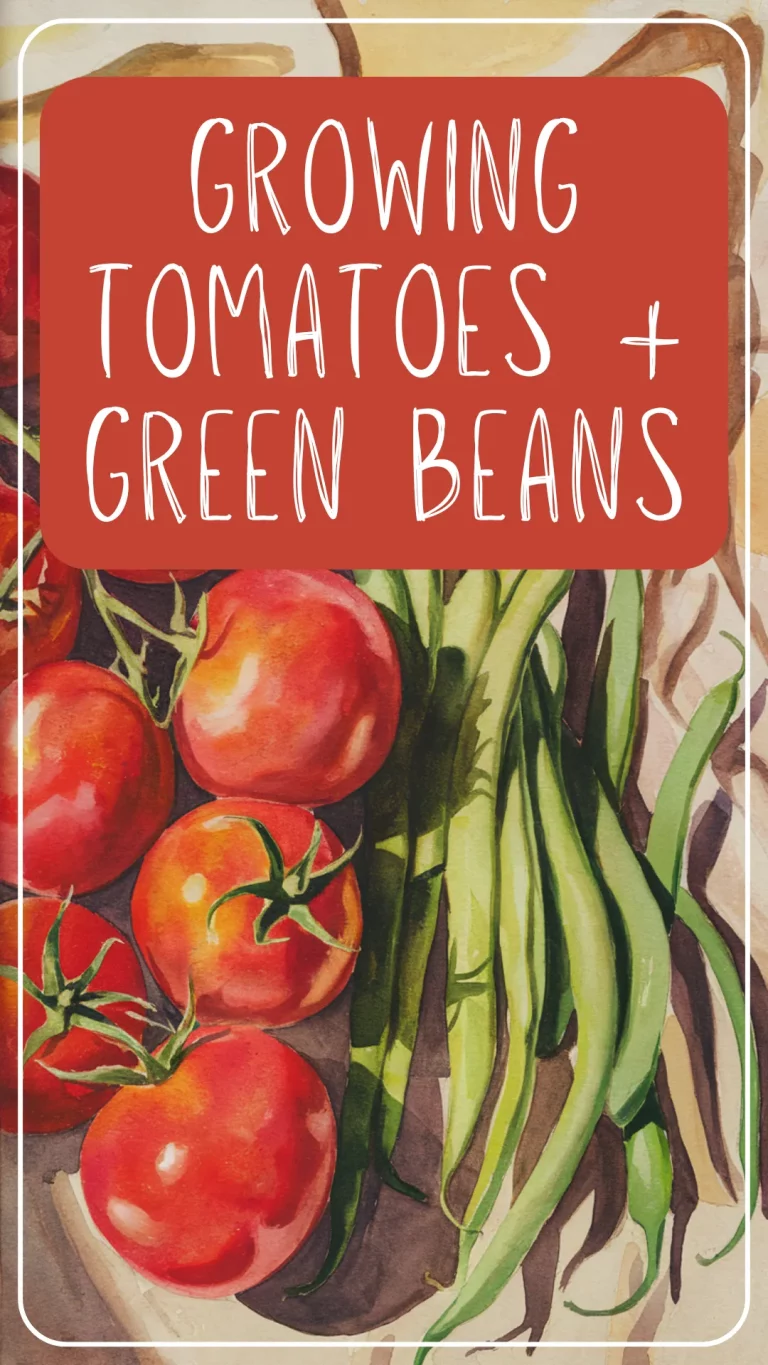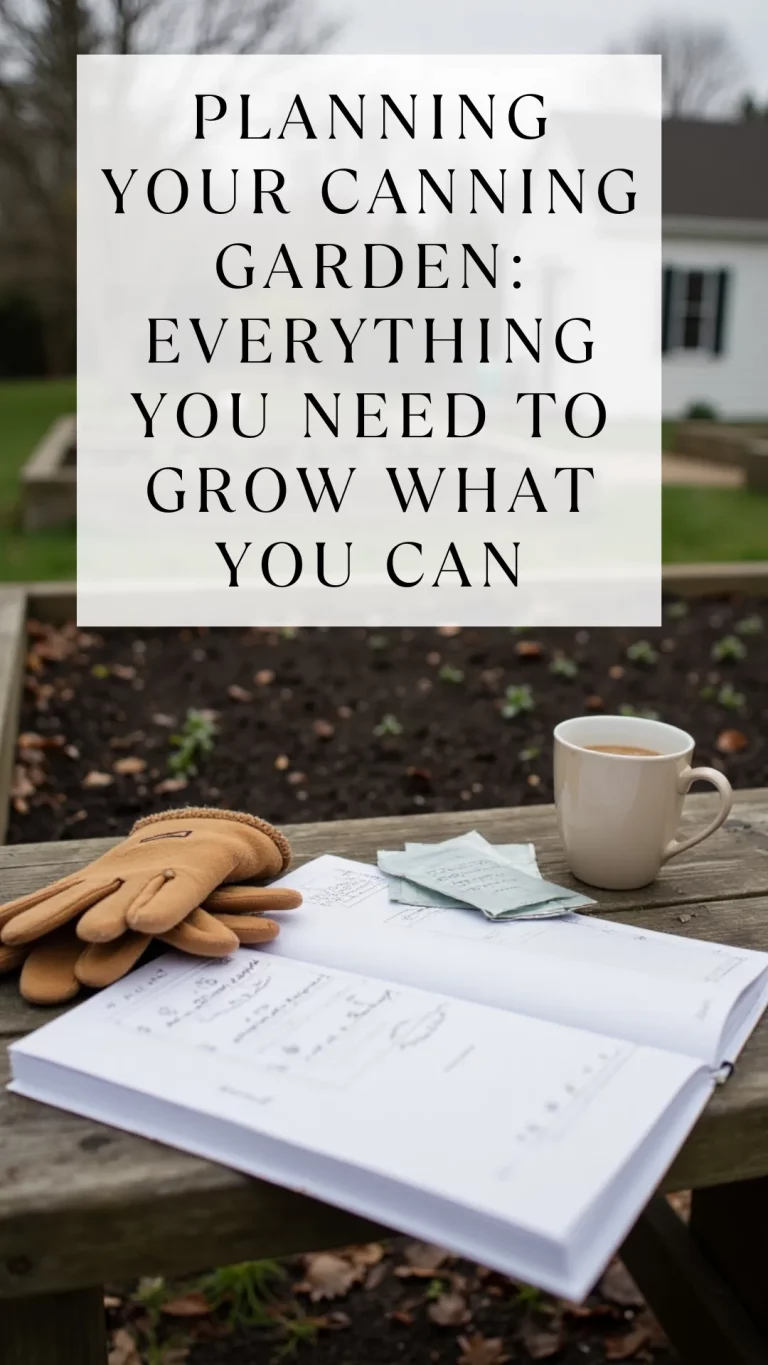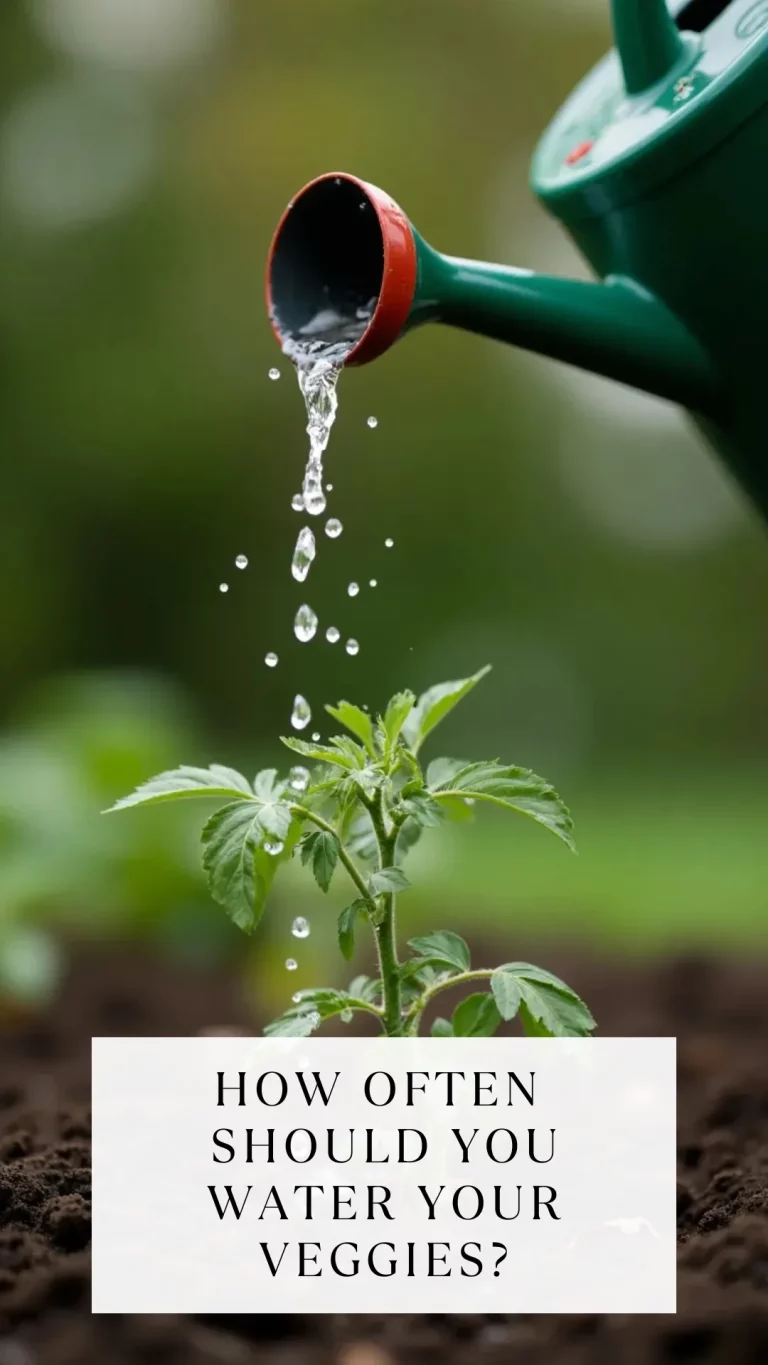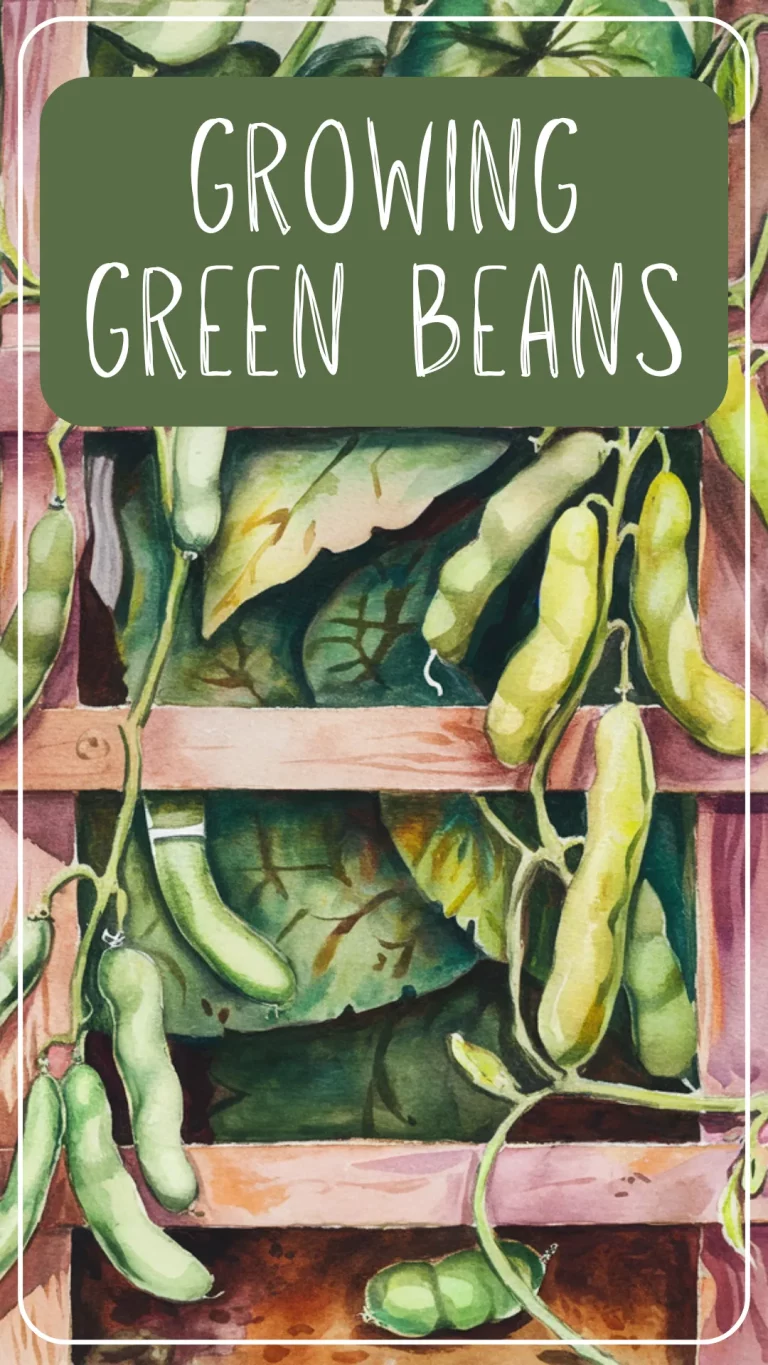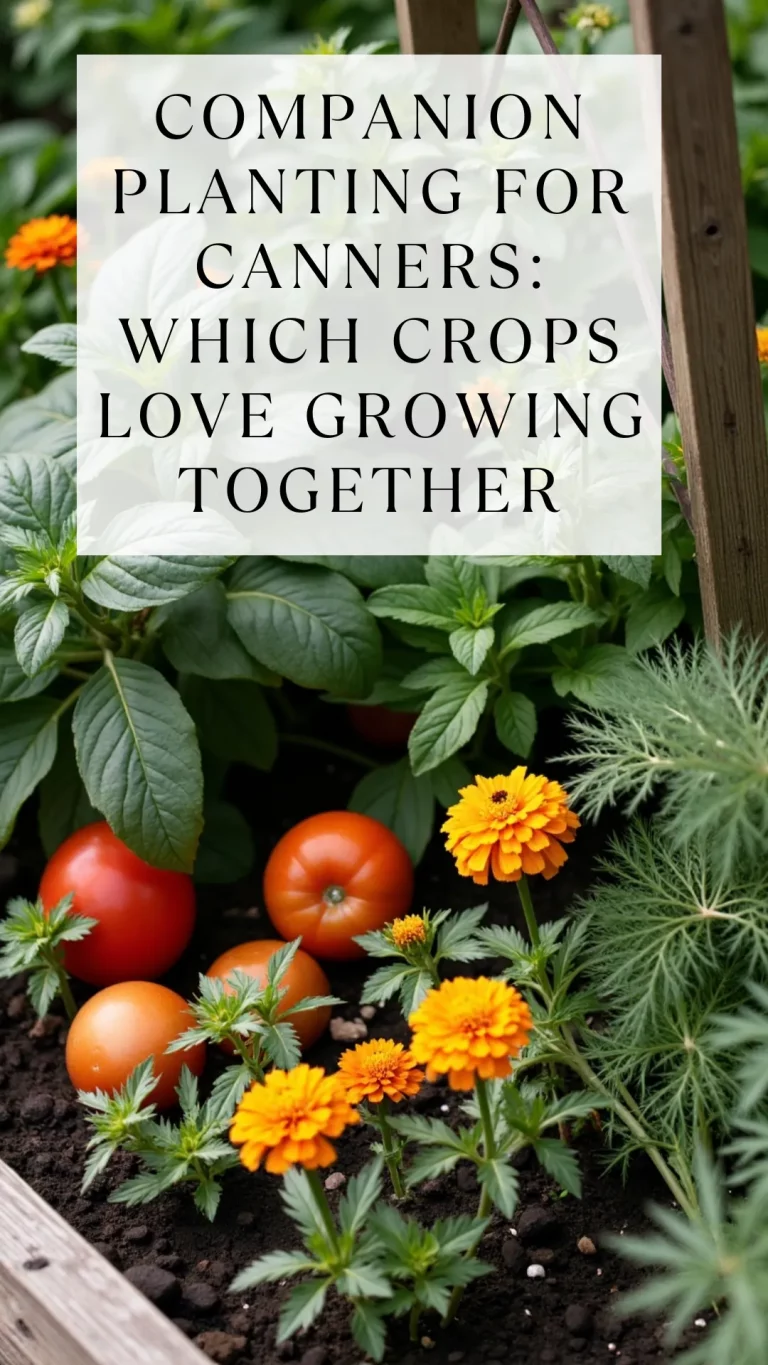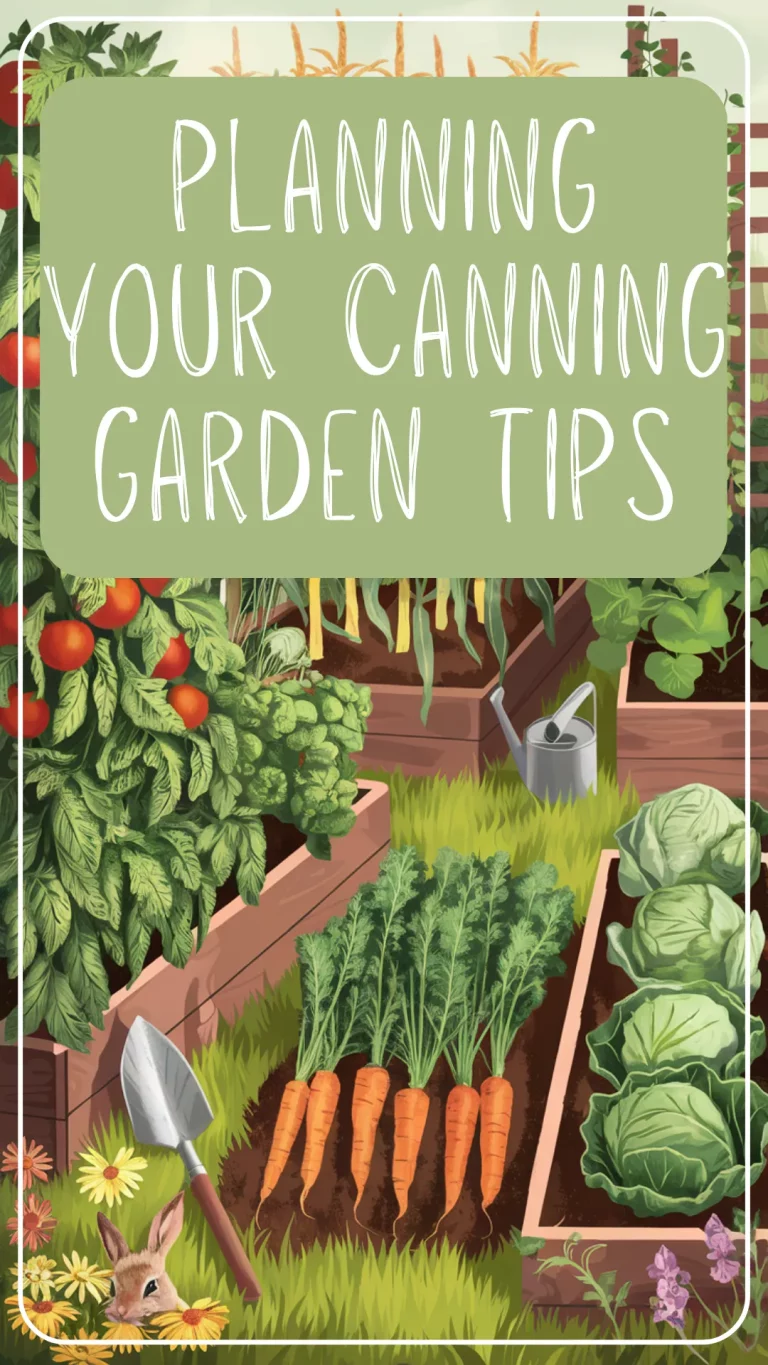What Is a Canning Garden? A Simple Way to Grow What You’ll Actually Use
A canning garden is a veggie garden planted with your pantry in mind. Instead of growing a bit of everything, you focus on crops you’ll actually preserve—like tomatoes for sauce, cucumbers for pickles, or green beans for the pressure canner. You grow with recipes in mind, plan for harvests that make sense for canning, and aim to fill jars, not just salad bowls.
Read on to see how this intentional style of gardening can help you waste less, preserve more, and feel a whole lot more confident come canning season.
Inside this post:
More Than Just a Vegetable Patch
My friend grew three kinds of radishes last year. They looked gorgeous. Deep pinks, pretty purples, even a watermelon one. But then she sent me a message: “So… what am I supposed to do with 47 radishes?”
That’s the kind of moment that makes gardeners pause and rethink things. Because growing food is amazing—but growing food you don’t end up using? Not so much.
That’s where a canning garden comes in.
Instead of planting whatever looks good in the seed catalog or seedling aisle, a canning garden starts with a different question: What do I actually want to put on the pantry shelf?
From there, everything gets easier. You know what to grow, how much to plant, and what to do with the harvest when it shows up. It doesn’t need to be big or complicated—but it does need to be intentional.
Let’s walk through what makes a canning garden different—and why it might be just what your summer needs.
A Garden with a Purpose
A canning garden isn’t just about growing vegetables—it’s about growing ingredients. You’re not planting at random or hoping for the best. You’re planting with jars in mind.
Instead of ending up with a little of this and a little of that, you’re aiming for enough of the right crops to actually turn into something useful—like pasta sauce, salsa, pickles, or soup starters.
It’s a mindset shift from fresh-eating to long-term use. Sure, you’ll snack on cherry tomatoes straight off the vine, but your main goal is to fill your shelves, not just your salad bowl.
Some of the best crops for canning gardens are:
- Tomatoes (sauce, salsa, crushed tomatoes)
- Green beans (pressure canned or pickled)
- Cucumbers (pickles)
- Peppers and onions (great in relishes and salsas)
- Beets and carrots (for pickling or pressure canning)
- Herbs like basil, dill, and garlic (for flavoring your jars)
When you start with the end goal—what you want in your pantry—it changes how you plan, plant, and preserve.
What Makes a Canning Garden Different?
At first glance, a canning garden might look like any other veggie patch. But underneath the surface, the planning is a little more focused—and a lot more intentional.
Here’s how it stands apart:
You grow with recipes in mind
Instead of planting random veggies and figuring out what to do with them later, you grow the ingredients you’ll need for the preserves your family actually uses. Think: salsa garden, pickle bed, pasta sauce patch.
You plant for quantity, not variety
If you’re canning tomato sauce, one or two tomato plants won’t cut it. You might need six, eight, or even more. A canning garden prioritizes enough of what you’ll preserve, rather than a little of everything.
You time your plantings around harvest goals
Some recipes (like salsa or relish) need several crops ready at the same time. Others (like green beans) are easier when staggered. A canning garden helps you coordinate ripening to fit your canning days.
You might group plants by purpose
Many canners organize their garden beds by recipe:
- A “salsa bed” with tomatoes, peppers, onions, and cilantro
- A “pickling corner” with cucumbers, dill, and garlic
- A “sauce row” with paste tomatoes and basil
This not only helps with planning—it also makes harvesting and canning days easier to manage.
Is a Canning Garden Right for Me?
If you’ve ever looked at a basket of homegrown produce and thought, “What now?”—this kind of garden might be exactly what you need.
A canning garden is a great fit if you:
- Want to build up a homemade pantry
- Hate wasting produce
- Get overwhelmed by food piling up before you know what to do with it
- Love the idea of eating from your garden all year round
- Prefer homegrown food that actually gets used (not just admired)
You don’t need a big plot of land or a full homestead setup. Raised beds, in-ground rows, or even large containers can work beautifully for small-scale preserving.
It’s not about growing everything. It’s about growing the right things, in the right amounts, for the recipes you actually want to use.
Start Simple (and Build Confidence)
You don’t have to grow a full pantry’s worth of food your first year. In fact, the best way to start a canning garden is to keep it small and focused.
Pick one or two things your family actually eats—maybe it’s salsa, pickles, or tomato soup. Then choose just a few crops that support that recipe. You’ll learn a lot, build your confidence, and end up with something truly useful on your shelf.
For example:
- Want to make tomato sauce? Grow paste tomatoes and basil.
- Love homemade pickles? Start with cucumbers, dill, and garlic.
- Making salsa? Focus on tomatoes, peppers, onions, and cilantro.
Not sure where to begin? This post walks you through an easy place to start:
Start a Canning Garden with Just 2 Crops – Canning for Beginners Made Easy
Over time, you can add more recipes, more crops, and more confidence. But even a small batch of homegrown tomato sauce is something to be proud of.
Grow What You’ll Use, Use What You Grow
A canning garden isn’t just about growing food—it’s about growing food with purpose. When you plan with your pantry in mind, everything feels more connected: your garden, your kitchen, your meals, your seasons.
You don’t need to go big. You don’t need to do it all. You just need to start with what matters to you. A few jars of sauce, a handful of pickles, or a shelf of green beans grown with intention—that’s the heart of a canning garden.
Start small. Keep it simple. And enjoy the quiet satisfaction of feeding your family from the garden… long after the season’s over.
Read Next
If you’re excited to grow food you’ll actually use, these posts will help you take the next step:
- Planning Your Canning Garden – A full guide to choosing crops, laying out your space, and planting with purpose
- Start a Canning Garden with Just 2 Crops – A gentle starting point for beginners who want early wins
- How Many Plants Do I Need for Canning? – Estimate your harvests so you grow enough to fill jars (without going overboard)
- Grow a Canning Garden You’ll Actually Use – Recipe-based planning for a garden that fills your shelves, not your compost pile
